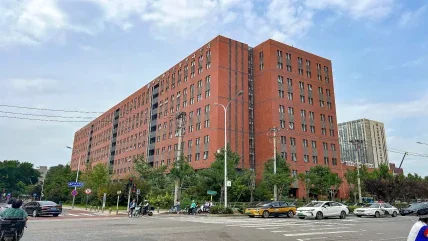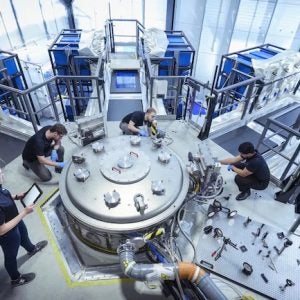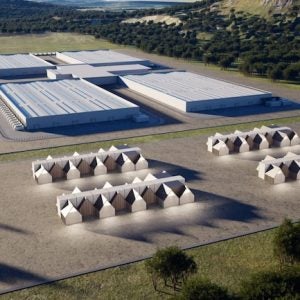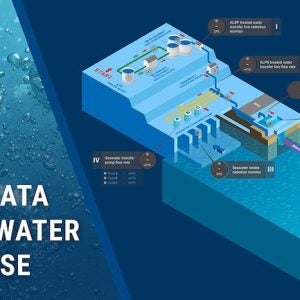
China’s National Nuclear Safety Administration (NNSA) has issued a licence to the Shanghai Institute of Applied Physics (SINAP) of the Chinese Academy of Sciences for operation of its Thorium Molten Salt Reactor – Liquid Fuel 1 (TMSR-LF1) at the Hongshagang Industrial Cluster, Wuwei City, in Gansu Province.
“The thorium-fuelled molten salt experimental reactor operation application and related technical documents were reviewed, and it was considered that the application met the relevant safety requirements, NNSA said in a statement. “It was decided to issue the 2 MWt liquid fuel thorium-based molten salt experimental reactor an operating licence.” The licence was issued by the General Office of the Ministry of Ecological Environment.
The reactor uses a special salt of lithium-beryllium fluoride as a coolant. It is expected to operate at a maximum temperature of 650°C for up to 10 years. If this reactor is successful, China plans a much bigger one. NNSA said operation of the reactor must observe the principle of ‘safety first’.
The project was started in 2011 at a cost of CNY3bn ($450m). Construction began in 2018 and was completed in 2021. In 2022, a commissioning plan was approved, and the reactor will operate for the first 5-8 years in batch mode, before converting to continuous operation.
The Chinese Academy of Sciences (CAS) assigned the project to SINAP, which now has molten salt reactor (MSR) research and design facilities in the Jiading District. The liquid fuel design is based on the 1960s Molten-Salt Reactor Experiment at Oak Ridge National Laboratory in the US
The TMSR-LF1 is a 2 MWt Generation IV reactor. The fuel salt is FLiBe ( (fertile blanket of lithium-beryllium fluoride) with more than 99.95% Li-7 with fluorides of zirconium, uranium (HALEU: 19.75% U-235), and thorium. The coolant salt is also FLiBe and the cover gas is Argon. The moderator is nuclear graphite and the structural material is UNS N10003 superalloy.
In future, a small modular reactor based on the LF1, as well as a fuel salt batch pyro-process demonstration facility, is planned. The TMSR-400 is designed as a thorium convertor and in situ burner driven by low enriched uranium. It will be used as a high temperature heat source, which can be used for electricity generation, but also for seawater desalination, heat supply, supercritical steam supply for industry demands and hydrogen production, etc.
It will use mature technologies and experiences accumulated from TMSR-LF1 project and potential technologies to be developed in subsequent years. The primary loop is designed as a compact reactor module and can be replaced every 8-10 years to solve the long-term irradiation problems of materials. A pilot stage pyro-processing facility will be established in 2030s. The used fuel in TMSR-400 will be sent to the facility for fuel salt recovery and to minimise the radioactive inventory for disposal.
Image: Cutaway of the thorium molten salt reactor nuclear energy system (courtesy of SINAP)






